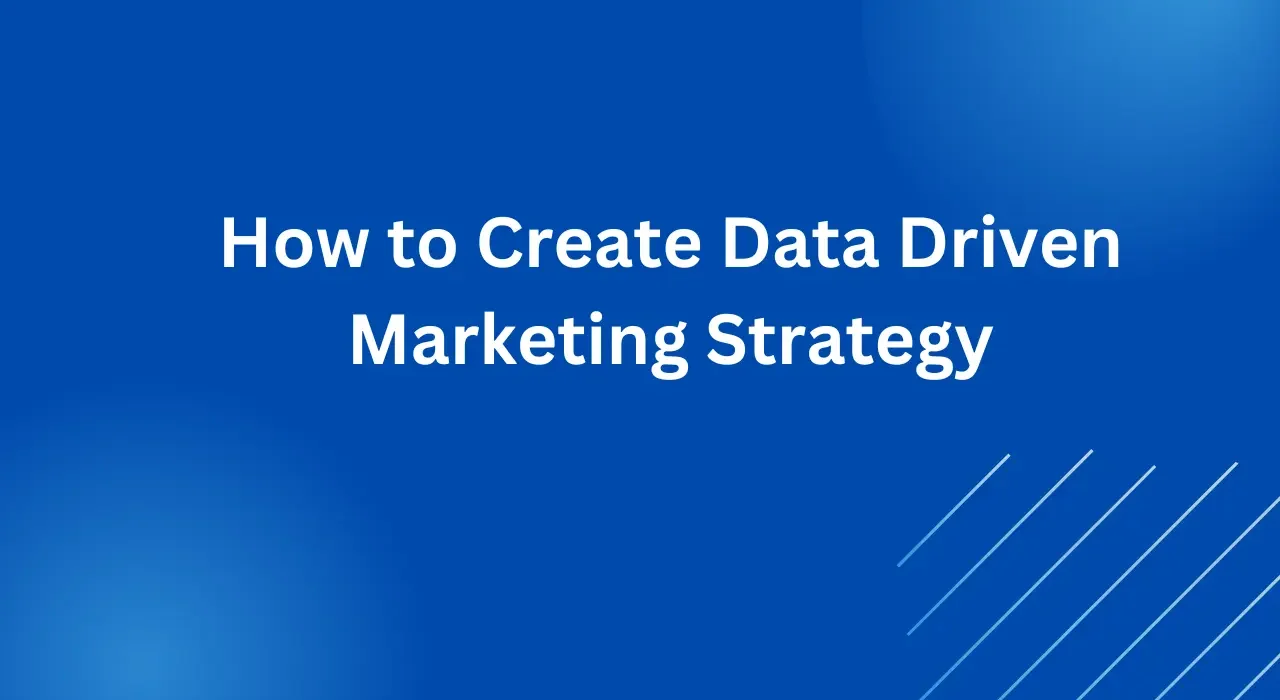Creating a data-driven marketing strategy involves leveraging data to make informed decisions, optimize campaigns, and achieve measurable results. Here’s a step-by-step guide to help you build an effective data-driven marketing strategy:
1. Define Your Goals and Objectives
- Set Clear Goals: Determine what you want to achieve (e.g., increase brand awareness, generate leads, boost sales, improve customer retention).
- Make Goals SMART: Ensure they are Specific, Measurable, Achievable, Relevant, and Time-bound.
- Align with Business Objectives: Ensure your marketing goals support broader business goals.
2. Understand Your Audience
- Collect Data: Gather data from sources like website analytics, CRM systems, social media insights, and customer surveys.
- Create Buyer Personas: Develop detailed profiles of your target audience based on demographics, behavior, preferences, and pain points.
- Segment Your Audience: Divide your audience into smaller groups based on shared characteristics to deliver personalized messaging.
3. Analyze Your Current Performance
- Audit Existing Campaigns: Review past and current marketing efforts to identify what worked and what didn’t.
- Use Analytics Tools: Leverage tools like Google Analytics, HubSpot, or Adobe Analytics to track key metrics (e.g., conversion rates, click-through rates, ROI).
- Identify Trends: Look for patterns in customer behavior, engagement, and sales data.
4. Choose the Right Data Sources
- First-Party Data: Collect data directly from your audience (e.g., website interactions, email sign-ups, purchase history).
- Second-Party Data: Partner with other organizations to access their first-party data.
- Third-Party Data: Purchase data from external providers to supplement your insights.
- Public Data: Use publicly available data (e.g., government statistics, industry reports) for broader context.
5. Leverage Technology and Tools
- Marketing Automation: Use tools like Marketo, HubSpot, or Pardot to automate campaigns and track performance.
- Customer Data Platforms (CDPs): Centralize customer data for a unified view of your audience.
- A/B Testing Tools: Experiment with different messaging, designs, and strategies to determine what resonates best.
- Predictive Analytics: Use AI and machine learning to forecast trends and customer behavior.
6. Develop Personalized Campaigns
- Tailor Content: Use data to create content that addresses the specific needs and interests of each audience segment.
- Dynamic Messaging: Personalize emails, ads, and website experiences based on user behavior and preferences.
- Omnichannel Marketing: Ensure consistent messaging across all channels (e.g., email, social media, website, in-store).
7. Monitor and Measure Performance
- Track KPIs: Focus on key performance indicators (e.g., conversion rates, customer acquisition cost, lifetime value).
- Use Dashboards: Visualize data in real-time to monitor campaign performance.
- Conduct Regular Reviews: Analyze data weekly, monthly, or quarterly to identify areas for improvement.
8. Optimize and Iterate
- Test and Learn: Continuously run experiments to refine your strategy.
- Adjust Campaigns: Use insights from data to tweak messaging, targeting, and channels.
- Scale Successes: Invest more in strategies that deliver the best results.
9. Ensure Data Privacy and Compliance
- Follow Regulations: Adhere to data privacy laws like GDPR, CCPA, and others.
- Be Transparent: Clearly communicate how you collect, use, and protect customer data.
- Secure Data: Implement robust security measures to protect sensitive information.
10. Foster a Data-Driven Culture
- Train Your Team: Ensure your team understands how to collect, analyze, and use data effectively.
- Encourage Collaboration: Break down silos between marketing, sales, and data teams.
- Invest in Skills: Provide ongoing training in data analysis, marketing technology, and analytics tools.
Key Metrics to Track
- Customer Acquisition Cost (CAC): Cost to acquire a new customer.
- Return on Ad Spend (ROAS): Revenue generated per dollar spent on ads.
- Conversion Rate: Percentage of users who complete a desired action.
- Customer Lifetime Value (CLV): Total revenue a customer generates over their lifetime.
- Engagement Metrics: Click-through rates, social media interactions, and email open rates.
By following these steps, you can create a data-driven marketing strategy that delivers measurable results, improves customer experiences, and drives business growth.

